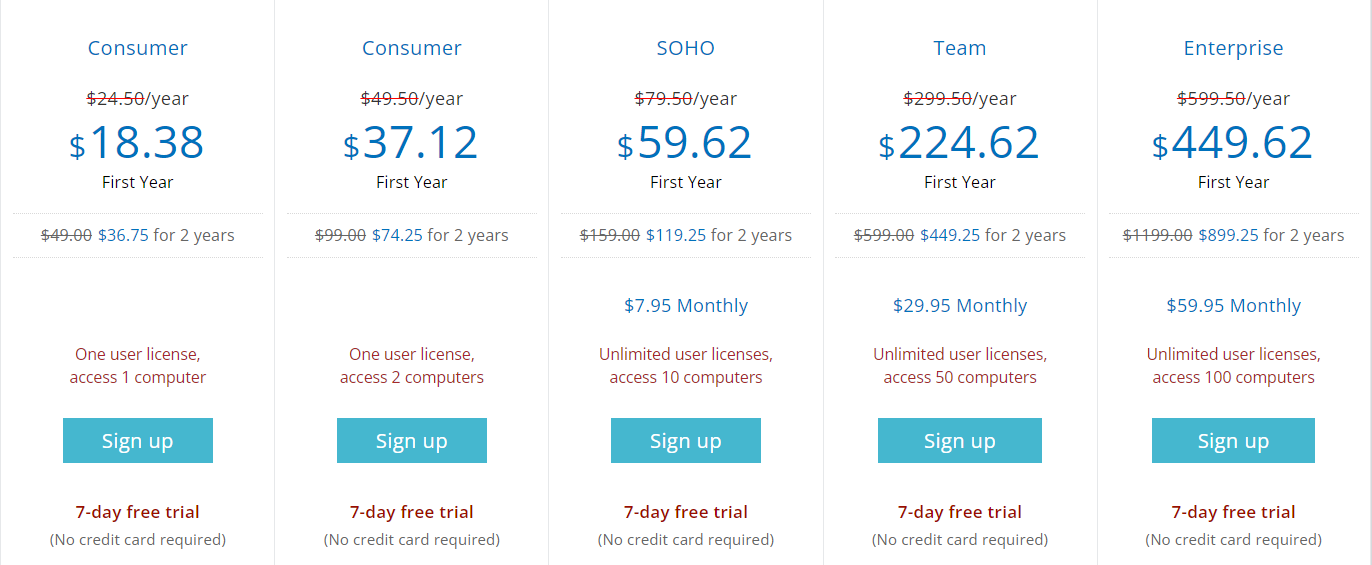

“Unfortunately, the world being what it is, I fully expect we will be paying several people $2,500.” “We are really going as far as we can to support the product, and all we’re asking in return is that people play fair with us,” the firm’s Charles Jones told PC Magazine.
#Remotepc pricing after a year software#
At one point in its history, Meridian Technologies had a bounty program in which it called on software users to turn in their colleagues for using unauthorized copies of Carbon Copy, a name that literally evokes cloning things. Ironically for a product called Carbon Copy, the tool had problems with piracy. In these early days before the internet was commonplace, these platforms worked over standard modems, and required people to call into the remote machine. (via Google Books)Ĭarbon Copy, which received a glowing, in-depth profile in InfoWorld the next year, was seen as an early leader in the market, with other tools such as Norton’s pcANYWHERE first emerging around the same period. This was an impressive trick for its time, and a somewhat obscure one- a 1986 PC Magazine profile called the product category “new enough to qualify as a secret for most PC users.”Īn ad for Carbon Copy Plus that promoted the fact you could work with two computers with just a single copy of the software. First offered in the mid-1980s, the software, initially produced by Meridian Technologies, used a trick to stay resident in memory in DOS, allowing remote users to call in and manage a computer over the phone line.
#Remotepc pricing after a year full#
But the idea of connecting to a computer as if it’s in the room and having full access to it still feels a bit like magic to some users, despite the fact that we’ve been doing it for decades.Ī key tool in the history of remote access software is Carbon Copy, an offering that allowed users to access remote computers from a distance and control them as if they were in the room. Remote access has been a theme of computer software for decades-all the way back from the early days when people would access mainframe networks on dumb terminals.

“After I dial in and connect to your computer, I can do whatever I want! Wonder if I should try the ‘format c:’ command? Whoo, I’M CRAZY!” No Windows, no problem: Remote access software dates back to the DOS days


 0 kommentar(er)
0 kommentar(er)
